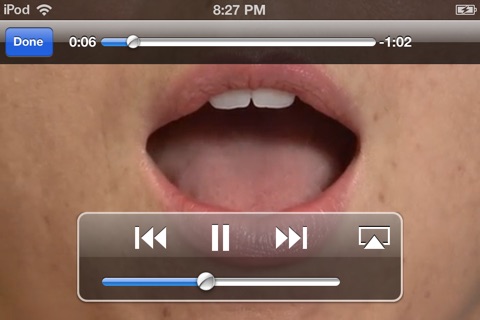
VAST Autism 1 - Core (Portuguese, BR)
*** Content of this app is in BRAZILIAN PORTUGUESE ONLY
VAST-Autism provides unprecedented support for spoken language, combining evidence-based practices and technology to deliver remarkable results.
VAST-Autism is a groundbreaking tool that provides state-of-the-art therapy to users with autism spectrum disorders (ASD) and motor speech disorders (MSD). It combines the highly effective concept of video modeling along with written words and auditory cues to help individuals acquire relevant syllables, words, daily expressions and sentences so they can speak for themselves. For individuals with strong visual skills, this can be a key element in the development of speech skills.
Ongoing research indicates that users are interested in the VAST videos and will immediately attempt oral movements or touch their face and mouth in response to the models. After some time using the VAST technology many users who were essentially nonverbal may begin word attempts more readily. Perhaps the most unexpected therapeutic improvements have been in the students’ ability to generalize skills. Individuals may begin attending to the speaker’s oral motor movements during daily communication and continue learning speech in a naturalistic manner.
The content of this application was developed by João Canossa Dias and Juliana Sá Rico.
João Dias is a Speech and Language Pathologist, graduating with distinction from Escola Superior de Tecnologia da Saúde do Porto. He mastered in Education Sciences from Universidade de Coimbra. João collaborates in the development of teaching materials and as a trainer in partnership with national and international organizations.
Juliana Rico is a Speech and Language Pathologist, graduating from Pontifícia Universidade Católica de Minas Gerais. She mastered in Science of Speech and Hearing from Universidade de Aveiro. Juliana is a specialist in Oropharyngeal Dysphagia, Orofacial Myology and Neuroevolutive Bobath Concept. She collaborates on the publication of SLP material and works as a teacher in Brazil and Portugal.
Videos are organized into a hierarchy of 7 categories beginning with syllables and ending with phrases. Each video is intentionally short to keep the user´s attention and to focus only on the given level’s content. All the stimulus in this application were selected according to developmental and functional criteria and incorporate meanings that can be generalized to contexts beyond therapy. The progression of VAST-Autism Videos is as follows:
1. Syllables
2. Diphthongs
3. Onomatopoeias
4. Words
5. Polysyllabic words
6. Daily Life Expressions
7. Usual Phrases
Language development takes place gradually. First, children develop language reception and then learn to express themselves. Around the age of 6 months the child’s babbling starts to take a syllabic form and syllable reduplications gradually appear in the repertoire. The repeated syllabic shape becomes increasingly frequent and, around 12 months, child should speak their first words; some of these words are, commonly, onomatopoeias.
Throughout the articulatory development, the child masters the production of simple monosyllabic words, monosyllabic words with diphthongs and disyllabic words with reduplication of syllables, harmonized or nonharmonized. This progression continues until the child masters the more complex word shapes with multiple syllables and consonant clusters.
The content of this application where defined according to literature review on child development in the areas of language and articulation. Vocabulary was also chosen to support functionality in daily life situations.
The mirror feature promotes oral motor sequencing and self-monitoring. Using a mirror while practicing speech sounds can provide visual feedback to help individuals improve their muscle coordination and sequencing for speech production.



